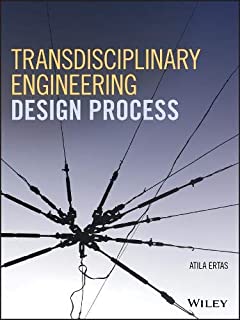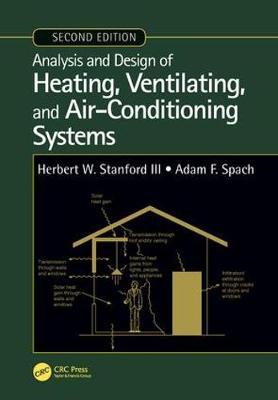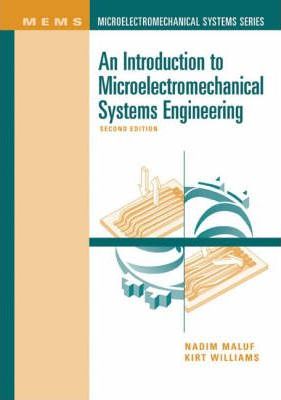Transdisciplinary Engineering Design Process
Original price was: ₹10,032.14.₹8,025.71Current price is: ₹8,025.71.
ISBN: 9781119474753
Author/Editor: Atila Ertas
Publisher: John Wiley
Year: 2018
1 in stock (can be backordered)
Description
A groundbreaking text book that presents a collaborative approach to design methods that tap into a range of disciplines
In recent years, the number of complex problems to be solved by engineers has multiplied exponentially. Transdisciplinary Engineering Design Process outlines a collaborative approach to the engineering design process that includes input from planners, economists, politicians, physicists, biologists, domain experts, and others that represent a wide variety of disciplines. As the author explains, by including other disciplines to have a voice, the process goes beyond traditional interdisciplinary design to a more productive and creative transdisciplinary process.
The transdisciplinary approach to engineering outlined leads to greater innovation through a collaboration of transdis ciplinary knowledge, reaching beyond the borders of their own subject area to conduct “useful” research that benefits society. The author–a noted expert in the field–argues that by adopting transdisciplinary research to solving complex, large-scale engineering problems it produces more innovative and improved results. This important guide:
Takes a holistic approach to solving complex engineering design challenges
Includes a wealth of topics such as modeling and simulation, optimization, reliability, statistical decisions, ethics and project management
Contains a description of a complex transdisciplinary design process that is clear and logical
Offers an overview of the key trends in modern design engineering
Integrates transdisciplinary knowledge and tools to prepare students for the future of jobs
Written for members of the academy as well as industry leaders, Transdisciplinary Engineering Design Process is an essential resource that offers a new perspective on the design process that invites in a wide variety of collaborative partners
Additional information
| Weight | 1.394 kg |
|---|
Product Properties
| Year of Publication | 2018 |
|---|---|
| Table of Contents | About the Author xi Preface xiii 1 Systemic Thinking and Complex Problem Solving 1 1.1 Introduction 1 1.2 What Is Complexity? 1 1.3 Source of Complexity 7 1.4 Two Aspects of Complexity 8 1.5 Complexity and Societal Problems 9 1.6 Understanding and Managing Complexity 13 1.7 Managing Complexity 18 1.8 Complex Systems, Hierarchies, and Graphical Representations 26 1.9 Axiomatic Design 30 1.10 Collective Intelligence Management 36 1.11 Design Structure Matrix 49 1.12 Metrics of Complexity 62 Bibliography 71 2 Transdisciplinary Design Process 77 2.1 Introduction 77 2.2 Design 78 2.3 Design Process Models 81 2.4 Typical Steps in Engineering Design Process 84 2.5 Design Review 102 2.6 Redesign 102 2.7 Other Important Design Considerations 105 2.8 Transdiscipline 114 2.9 Transdisciplinary Domain 120 2.10 Transdisciplinary Design Process: Social Innovation through TD Collective Impact 122 2.11 Generic TD Hybrid Design Process 128 2.12 Transdisciplinary Research Process 129 Bibliography 140 3 Project Management and Product Development 145 3.1 Introduction 145 3.2 Project Management 145 3.3 Technical Management 163 3.4 Clarifying the Project Goals and Objectives 169 3.5 Decision-Making 173 3.6 Process of De?ning Customer Needs 180 3.7 Techniques and Methods for Product Development and Management 189 3.8 Cascade to Production 205 3.9 Production Process Planning and Tooling Design 206 Bibliography 214 4 Transdisciplinary Sustainable Development 221 4.1 Introduction 221 4.2 Transdisciplinary Sustainable Development 222 4.3 Contaminated Environment 227 4.4 Groundwater Sustainability 228 4.5 Soil and Groundwater Restoration 231 4.6 Occupational Safety and Health 258 4.7 Prevention through Design: Transdisciplinary Design Process 263 4.8 Environmental Degradation, Sustainable Development, and Human Well-Being 267 4.9 Ecosystems 271 4.10 Conclusion 279 Bibliography 279 5 Design for Manufacture 289 5.1 Introduction 289 5.2 Why Design for Manufacture? 289 5.3 The Six Steps in Motorola's DFM Method 290 5.4 Lean and Agile Manufacturing 290 5.5 Design for Manufacture and Assembly Guidelines 292 5.6 Six Sigma 294 5.7 Tolerancing in Design 320 5.8 Geometric Dimensioning and Tolerancing 321 5.9 Future of Manufacturing: Additive Manufacturing 329 Bibliography 336 6 Design Analyses for Material Selection 341 6.1 Introduction 341 6.2 General Steps in Materials Selection 342 6.3 Classi?cation of Materials 354 6.4 Material Properties 357 6.5 Analysis of Material Requirements 361 6.6 Design Analysis for Fatigue Resistance 375 6.7 Miner's Rule: Cumulative Fatigue Damage 383 6.8 Fracture Mechanics Based Fatigue Analysis 390 6.9 Design Analysis for Composite Materials 411 6.10 Residual (Internal) Stress Considerations 422 6.11 Material Standards and Speci?cations 426 6.12 Corrosion Considerations 430 Bibliography 432 7 Statistical Decisions 441 7.1 Random Variables 441 7.2 Measures of Central Tendency 445 7.3 Measures of Variability 446 7.4 Probability Distributions 450 7.5 Sampling Distributions 456 7.6 Statistical Inference 459 7.7 Design of Experiments 471 7.8 Taguchi Methods 480 Bibliography 509 8 Risk, Reliability, and Safety 519 8.1 Introduction 519 8.2 What Is Risk? 519 8.3 Basic Mathematical Concepts in Reliability Engineering 531 8.4 Probability Distribution Functions Used in Reliability Analysis 533 8.5 Failure Modeling 540 8.6 Probability Plotting 542 8.7 Basic System Reliability 544 8.8 Failure Mode and Defects Analysis 567 8.9 Fault-Tree Analysis 574 8.10 Probabilistic Design 582 8.11 Worst-Case Design 588 Bibliography 590 9 Optimization in Design 595 9.1 Introduction 595 9.2 Mathematical Models and Optimization Methods 597 9.3 Optimization of System Reliability 620 Bibliography 630 10 Modeling and Simulation 637 10.1 Modeling in Engineering 637 10.2 Heuristic Modeling 638 10.3 Mathematical Modeling 640 10.4 Dimensional Analysis 644 10.5 Similarity Laws in Model Testing 647 10.6 Wind and Water Tunnels 649 10.7 Numerical Modeling 649 10.8 Discrete Event Simulation 658 10.9 Knowledge-Based Systems in the Design Process 660 Bibliography 667 11 Engineering Economics 671 11.1 Project/Product Cost and the Engineer 671 11.2 Cost Analysis and Control 675 11.3 Important Economic Concepts 682 11.4 Selecting an Appropriate Rate of Return 690 11.5 Evaluation of Economic Alternatives 692 Bibliography 708 12 Engineering Ethics 715 12.1 Ethics in Industry 715 12.2 Ethics and the University 716 12.3 Ethics in Engineering 717 12.4 Legal Responsibilities of Engineers 720 12.5 Codes of Ethics 722 12.6 Ethical Dilemmas 726 12.7 The NSPE Code of Ethics for Engineers 729 Bibliography 734 13 Communications in Engineering 735 13.1 Introduction 735 13.2 The Formal Engineering Report 736 13.3 Proposal Preparation 748 13.4 Oral Communications 752 13.5 Oral Presentations 754 13.6 A Final Word on Communications 756 Appendix A 759 Appendix B 781 Appendix C 785 Appendix D 807 Index 811 |
| Author | Atila Ertas |
| ISBN/ISSN | 9781119474753 |
| Binding | Hardback |
| Edition | 1 |
| Publisher | John Wiley |
You must be logged in to post a review.






Reviews
There are no reviews yet.